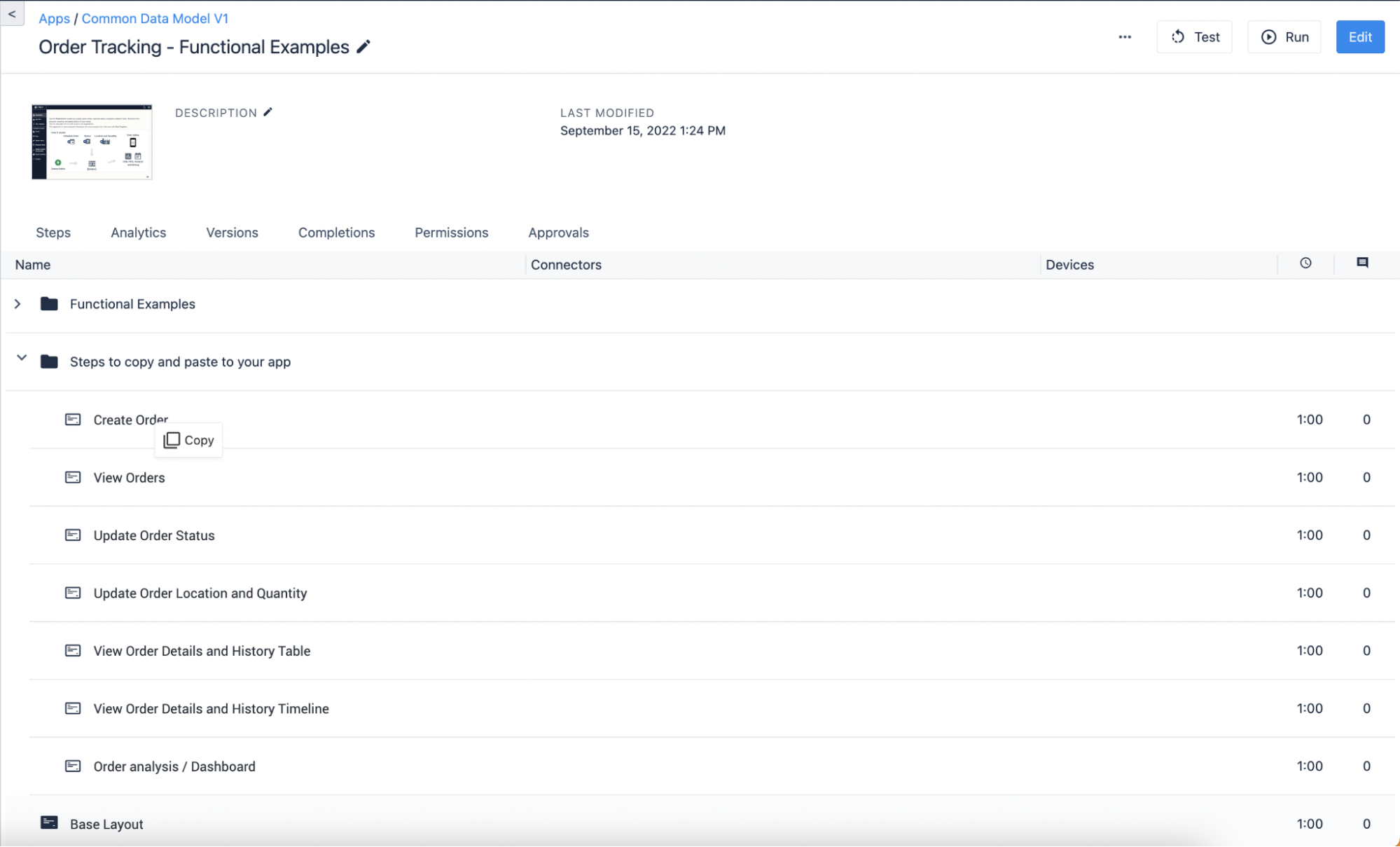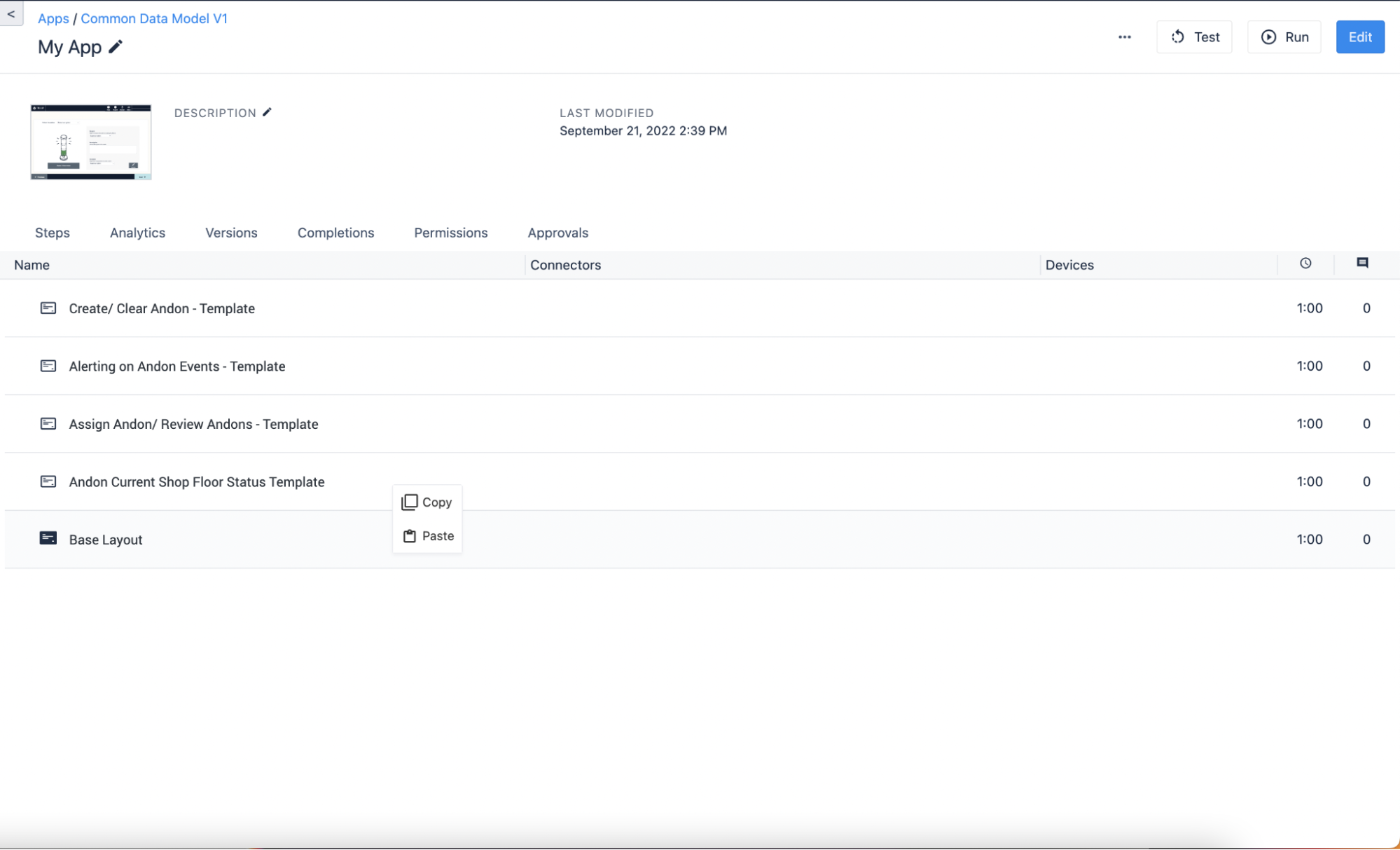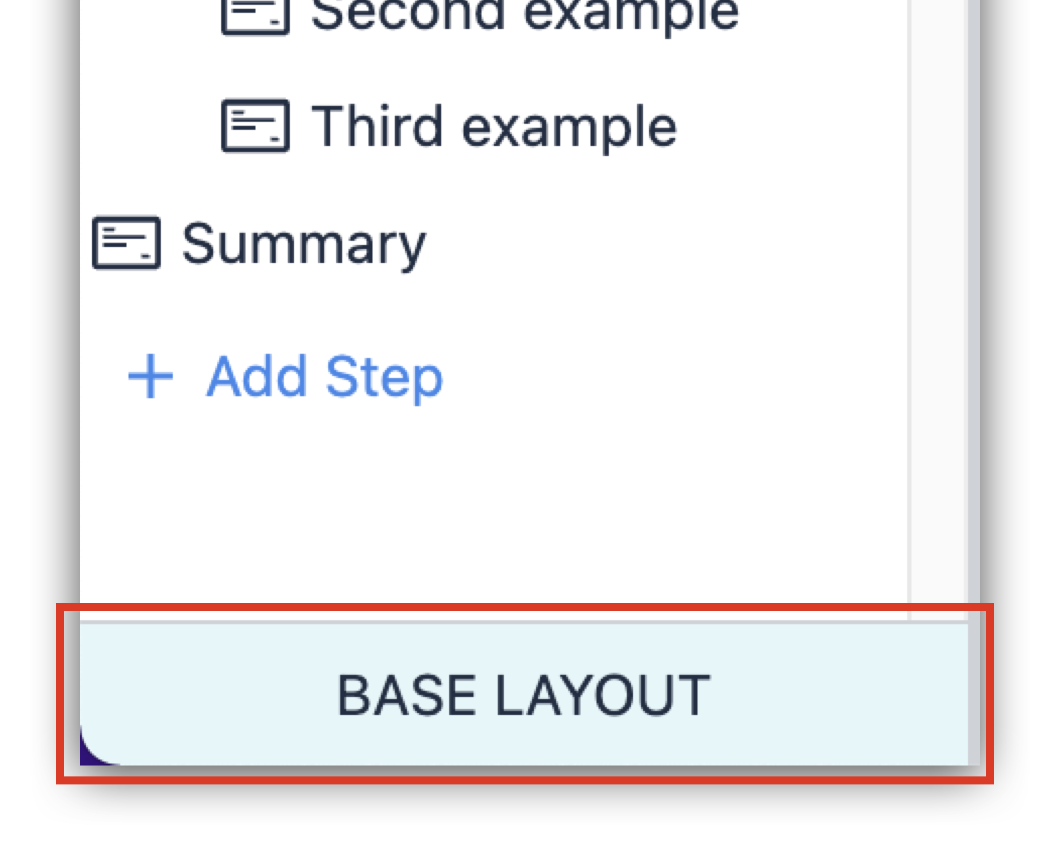Tulip Functional Examples
Functional examples are Tulip’s way of capturing best practice and approaches that you can leverage to build out your use cases.
They enable you to:
- Not start from scratch
- Learn from others
- Build on existing best practices
For example:
You want to build an order tracking solution but you are not sure how to best do this in Tulip. You should start with the order tracking functional example. This will help you figure out how to map out processes and functions in your solution as well as provide some components to copy and paste into your app.

1. Open the functional example in the apps page of your Instance. Select the step you want to copy by right clicking on it.

2. Paste the step into your app. The Base Layout will not carry over, and you don’t need to worry about refitting the step. Note: Queries and Aggregations will not be carried over with the step when you copy and paste it to your app. In order to configure these, follow the instructions in the support article for the specific functional example.
You can then extend your use case by using other functional examples. If you want to track defects in your order tracking app, you could use some of the functions in the defect tracking app and copy and paste the components that interest you.
You can further combine your app with templates, custom widgets, integrations or devices to create powerful and effective solutions for your order and defect tracking.
What to expect from a functional example?
| What it is | What it is not |
|---|---|
| Shows how to apply a use case and/or achieve functionality using examples. | Teach Tulip app building techniques and assume basic to good Tulip skill level. |
| Functioning application that is a demonstrator / example | Not a production ready but shows core elements and techniques to include in a production ready application. |
| Functions can be copy and pasted, and adapted on to incorporate into applications. | |
| Built on the Tulip common data model. | |
| Tool kit / building blocks for the user to build the use case. | Exhaustive list of all the possibilities of with platform or data model. |
When to use a functional example?
You can make successful use of a functional example if:
- You have already built some apps in Tulip, but you want to extend their use case.
- You want to learn the best practices and existing patterns to manage your use case (especially, how to model the data effectively).
- You are a new user and you want a challenging tutorial to build specific solutions for your shop floor, like an andon system.
How to use functional examples?
- Map out your process(es): what apps do you need to support it?
You can use an operational flow diagram (OFD) to help you figure this out. If you are not too familiar with OFDs, you can download our template to guide you through. If you have never worked with OFDs before, you can also check out our example.
- Identify your starting points: which functional examples will support your use case?
Explore the library website to find content (example videos, quick tips, overviews etc.) that will direct you to the relevant functional examples. You can also compile a list of relevant functional examples, if you already have a clear idea of what you’ll need.
- Map out the apps you need to create: what functions will be included in your apps?
You can use some OFDs to map out your apps’ flow similarly to what you did for your processes (you can find our template for apps OFD). If you are not familiar with this, you can have a look at our example.
- Add templates to your instance and copy-paste relevant steps from functional examples to compose your app.
Make sure that you are on the same tab when you copy-paste steps from functional examples into your app.
Note: Table queries and aggregations will not be carried over with the step when you copy and paste it to your app. In order to configure these, follow the instructions in the support article for the specific functional example.

